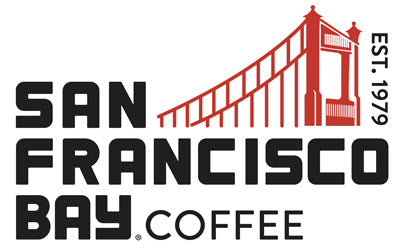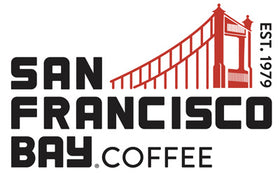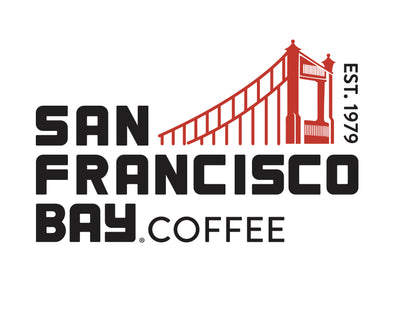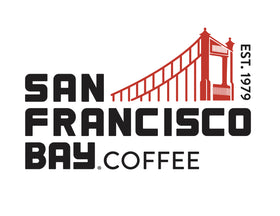Espresso Beans: A Complete Guide

For coffee lovers, few experiences rival the rich and intense flavor of a well-crafted espresso. Whether you're a seasoned barista or casual coffee enthusiast, understanding the unique characteristics of espresso beans can help you elevate your coffee experience. This guide will discuss everything you need to know about espresso beans, from their history to where to find the best options for your next brew.
The History of Espresso

Espresso traces back to 19th-century Italy, when inventors sought quicker ways to brew coffee. In 1884, Angelo Moriondo patented the first espresso machine, a groundbreaking design that allowed coffee to be prepared swiftly under high pressure. Over the next few decades, advancements refined the espresso-making process, transforming it into a social and cultural staple across Europe.
In the 1940s, Italian café culture began spreading worldwide, bringing espresso's allure to new markets. Today, espresso remains a beloved staple, a symbol of Italian craftsmanship and coffee culture. The drink's long history influences how we perceive and appreciate espresso beans, celebrating their unique place within the coffee world.
What are espresso beans?

Espresso beans are often a source of confusion–aren't they just coffee beans? Technically, yes. Espresso beans are coffee beans that have been roasted, blended, and ground to optimize the bold, concentrated flavors expected from an espresso shot. Generally, espresso beans are medium or dark roasts, which bring out a fuller body and reduced acidity in the resulting coffee.
Espresso beans are typically chosen for their richness and low acidity. The beans used for espresso are selected for their balanced flavor profiles and depth, allowing their flavors to shine when brewed under high pressure. While any coffee bean can technically be used to make espresso, those labeled "espresso" are curated for optimal taste.
Espresso Roast Levels
Espresso can be made from various roast levels, though medium and dark roasts are more common due to their full-bodied flavor:

-
Light Roast: Light roast espresso has a niche following among coffee enthusiasts for its unique, vibrant flavors, though it requires a careful approach to bring out the best taste. Unlike traditional dark roasts, light roast espresso often highlights fruity or floral notes. It retains a higher acidity, which can be balanced by adjusting parameters like grind size, temperature, and shot time. To achieve a pleasant profile, baristas often use a longer shot ratio (using more water and increasing the brewing time) or a finer grind with a higher temperature to manage the coffee's natural density and acidity.
-
Medium Roast: Medium roast beans are a popular choice for espresso, offering a smooth balance of acidity and sweetness without the pronounced bitterness of darker roasts. This roast level tends to highlight fruity and chocolate notes while maintaining a fuller body, making it approachable yet flavorful. When brewing medium roast espresso, baristas often recommend a slight increase in extraction time and increased water temperature to enhance body and sweetness, striking a satisfying middle ground between the lively brightness of light roasts and the intensity of dark roasts.
-
Dark Roast: Dark roasts are a classic choice for espresso due to their robust, smoky flavors and low acidity, which produce a traditional, intense espresso profile. During the roasting process, dark roasts develop notes of dark chocolate, caramel, and even subtle earthy tones that blend well with milk-based drinks, like lattes and cappuccinos. Brewing with dark roasts requires careful attention to temperature and grind size; using a slightly coarser grind and a lower temperature can prevent overly bitter flavors that might otherwise emerge with finer grinds or high brewing temperatures.
As with any coffee beverage, it is a great idea to experiment to find the espresso roast level, grind, extraction time, and temperature you enjoy the most!
Are espresso beans different from coffee beans?
The difference between espresso beans and coffee beans mainly comes down to roasting, grinding, and brewing methods:
-
Roasting: Although any roast level can be used to make espresso, espresso beans are traditionally roasted darker than standard coffee beans to create a rich, bold flavor that complements the high-pressure brewing method.
-
Grinding: Espresso requires a finer grind size than standard drip coffee, allowing the water to extract intense flavors within a short brew time.
-
Brewing: Espresso is made by forcing hot water through finely-ground beans at high pressure, creating a concentrated shot of coffee topped with crema.
Essentially, espresso beans are coffee beans tailored to the specific demands of espresso brewing. However, if you prefer, you can use regular coffee beans for espresso, as long as you grind them finely and select a roast that suits your taste.
How much caffeine is in a shot of espresso?

Espresso is known for its bold flavor and caffeine kick, but exactly how much caffeine does it contain? An average one-ounce shot of espresso made from medium-dark to dark roasted beans contains around 65 milligrams of caffeine, which is higher per ounce than most drip coffee. However, because espresso is served in smaller quantities, a full cup of drip coffee typically has more caffeine overall.
Caffeine Comparison
• Single Espresso Shot (1 oz): ~65 mg of caffeine
• Standard Drip Coffee (8 oz): ~95 mg of caffeine
Despite its concentrated flavor, espresso's serving size means it provides a quick, intense coffee experience without necessarily packing a larger caffeine dose than a full cup of coffee. However, it's perfect for those who enjoy a strong taste and an energizing jolt in a small package.
Tips for Choosing the Right Espresso Beans
When choosing espresso beans, consider these key factors:
-
Roast Level: For traditional espresso, opt for medium to dark roasts. These beans will provide the optimal balance and depth associated with classic espresso.
-
Freshness: Freshly roasted beans make a noticeable difference in taste. Look for beans roasted within the past few weeks.
-
Flavor Profile: Decide on your preferred taste notes. Dark roasts offer intense, chocolaty flavors, while medium roasts provide more nuanced, balanced profiles.
-
Grind Consistency: If you're grinding beans yourself, aim for a fine, uniform grind to ensure proper extraction.
By taking the time to select high-quality beans, you'll enjoy a richer, more satisfying espresso experience.
Where to Buy the Best Beans for Espresso
For those seeking exceptional espresso beans, selecting high-quality, carefully roasted options is critical. Here are some top picks from San Francisco Bay Coffee to consider:
-
Espresso Roast Coffee - 2 lb bag of whole beans: Crafted to deliver a smooth, rich flavor, this espresso roast is ideal for those who enjoy a classic, bold espresso experience. The whole beans can be ground to precisely the grind you prefer.
-
Espresso Roast Coffee - OneCupTM Coffee Pods: Perfect for convenience and consistency, these single-serve pods offer a quick, full-bodied espresso experience with minimal prep. As a bonus, the pods are commercially compostable!
-
Espresso Roast Decaf Coffee - 2 lb bag of whole beans: For a decaffeinated option, this espresso roast retains the boldness and flavor of traditional espresso without the caffeine kick. The beans are decaffeinated using the Swiss Water® Process, so it is 99.9% caffeine-free and 100% delicious!
-
Organic Coffee Company Hurricane Espresso - 2 lb bag of whole beans: This organic espresso offers a unique, medium-dark blend of beans from Central America. The flavors showcase brown spice, dark berries, and milk chocolate.
-
Organic Coffee Company Hurricane Espresso Decaf - 2 lb bag of whole beans: The decaf version of Hurricane Espresso provides the luscious flavor without the caffeine, ideal for evening or caffeine-free preferences.
-
Dark Roast Variety Pack OneCupTM Coffee Pods: For a mix of options, this pack includes dark roasts with different flavor profiles, suitable for espresso lovers looking to explore new tastes.
-
Medium and Light Roasts: In addition to the popular dark roast selections for traditional espresso, San Francisco Bay Coffee offers a variety of medium and light roast coffee that espresso enthusiasts can experiment with to find their favorite brews.
Shop San Francisco Bay Coffee

Finding the perfect espresso beans can make all the difference in your coffee experience. With a range of carefully crafted roasts, San Francisco Bay Coffee provides everything from bold dark roasts to vibrant light roasts, giving you a broad spectrum of flavors to experiment with. Whether you're a fan of traditional espresso flavors or enjoy exploring fruity and floral profiles, our selection has something to suit every taste.
Explore the entire San Francisco Bay Coffee collection to discover the ideal beans for your espresso setup and elevate your brewing routine with options that celebrate quality, flavor, and sustainability.



